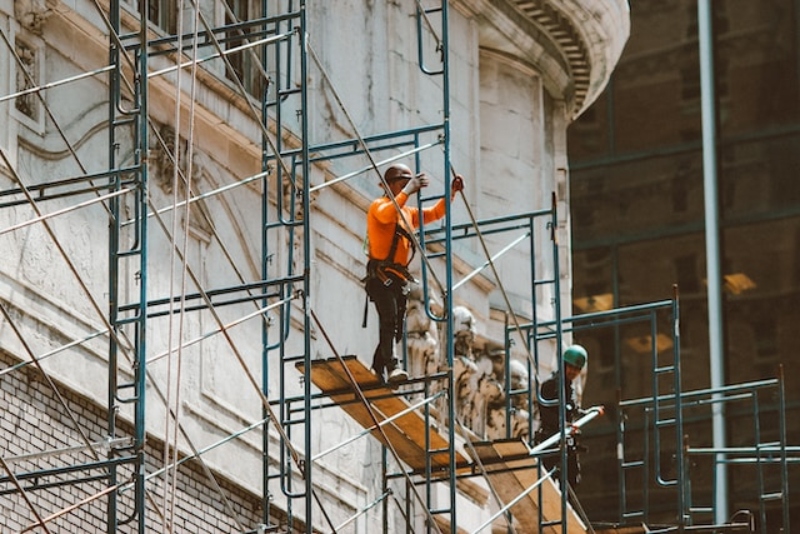
If you frequently work on scaffolding, you will be aware that there are countless fall risks involved. Scaffolding is a great way to work at height - it provides a stable working platform and it is an area of safe access for construction workers.
Despite this, accidents can still happen. Thankfully, you can prevent them. Here are our scaffolding safety tips including everything you need to know about staying secure and safe when using scaffolding.
1. Always Inspect Your Scaffold
According to the Health and Safety Executive, a scaffold should be inspected:
- At least once every 7 days
- Following any circumstances that could affect the safety of the scaffold (such as extreme weather)
It is also important to check that your scaffold has all of its necessary components so you can maintain stability when working at height.
Once you have conducted your scaffold inspection, your report must note any defects that could be a risk to you or your team's health and safety. From this, any corrective actions should be taken to identify and rectify the risk. Sometimes, this may mean not using your scaffolding at all (if it's not up to regulation standards!). In some cases, however, this may mean adding parts to your scaffolding such as toe-rails or new guardrails.
2. Take Care When Building Your Scaffold
Never think that you are above the building instructions - even if you are a qualified construction worker! Instructions are there for a reason, and they should be followed accordingly
When building your scaffold tower, you should ensure that:
- Your platforms are fully planked and have rails and toe-boards around the open sides.
- The scaffold's bracing is placed along the vertical area of the scaffold to support heavier items.
- The platform's footings are on level, solid ground to securely support the scaffold.
- The guardrails are secure, with top-rails and mid-rails installed.
- Guying ties are installed either according to the manufacturer's recommendation, or when the height-to-base of your scaffold reaches a 4:1 ratio (which can increase the risk of tipping).
3. Never Exceed the Scaffold's Load Limit
All scaffolds have a precise load limit. Once this limit is exceeded, the scaffold may no longer be safe for use as its stability will be compromised. Ensure that you check your scaffold's load limit, and you take precautions to ensure that this isn't exceeded when working at height.
To do this, you will have to calculate the weight of yourself and your team, alongside any tools and equipment that you may have on yourself or the work platform.
4. Comply With Working at Height Regulations
You must ensure that everybody working with you is trained and has knowledge of the working at height regulations. Most importantly, you should:
- Avoid setting jobs that involve working at a dangerous height whenever possible
- Do what you can to minimise fall risks (through risk assessments and inspections)
- Use PPE for scaffolding to prevent falls and injuries
- Assess the surrounding work area for any hazards or risks
PPE for Scaffolding from SafetyLiftinGear
There is a wide range of equipment that can help prevent an individual from getting injured when working on a scaffold. We make it our business to supply the equipment that is needed in this working condition. Take a look at our full range of working at height safety equipment, or see our list below of vital equipment we recommend you think about when preparing your team to work at height:
Harnesses Height Safety Kits Fall Protection Equipment
If you would like any advice on what equipment best suits you and your team, feel free to get in touch. We are more than happy to ensure you know what equipment is needed to follow correct work at height regulations and fulfil employer responsibilities.
For any query regarding and safety or lifting gear (or both!) contact us today.

